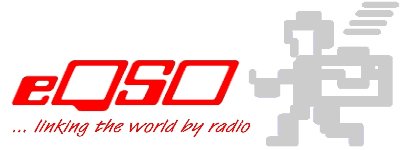The "official" codes were assigned meanings by the International Telecommunications Union in 1959. The abridged definitions of the "official" codes are derived from a very detailed list compiled by using information extracted from Allied Communications Publication 131(B), Amendment 1.
Also included, are the "unofficial" meanings assigned by the American Radio Relay League (ARRL) to QST and to codes in the QNA to QNZ series, which are defined in the ARRL Handbook for Radio Amateurs and should only be used in amateur CW nets. These net codes should not be used in casual amateur CW conversations or in phone nets. When used by the Amateur Service, meanings assigned to codes in the QNA to QNZ series by other Services do not apply. Most, but not all, of the codes can be used either as a statement or a question, depending on the context of their use.
These Q-Codes were intended for CW use, where the question form would be denoted by following the code with a question mark (..--..). When using the ARRL definitions of codes in the QNA to QNZ series, no question mark is necessary, even though the meaning may be interrogatory. Radio amateurs, and some professional operators, also use these codes on telephony, where the context is more obvious. Also, in amateur radio use, Q-Codes are often used as an abbreviation for a longer phrase. For example, QTH is used to indicate the location of the station as in "My QTH is Storrington", whereas QTH actually means "What is your position in latitude and longitude (or according to some other recognised location system)" or "My position is .......".
info selanjutnya sila dapat dilihat VE3LXV Q code information page
skip to main |
skip to sidebar

Malaysian Amateur Radio Emergency Service Society

The Malay Amateur Radio Society of Northern Peninsular Malaysia

Malaysian Amateur Radio Transmitters' Society

Powered by IP2Location.com

SiteRing by Bravenet.com
PERJALANAN HIDUP AKU RASANYA BELUM PUAS LAGI DALAM MENYUSURI ALAM RADIO AMATUR,BANYAK YANG BELUM AKU PELAJARI
Facebook Badge
MESSENGER
Rakan Sehobi
- 9m2abc
- 9m2agc
- 9m2amz
- 9m2ar
- 9m2au
- 9m2aur
- 9m2bal
- 9m2da
- 9m2dan
- 9m2get
- 9m2ibr
- 9m2jen
- 9m2mku
- 9m2mo
- 9m2mz
- 9m2mzr
- 9m2naz
- 9m2nnl
- 9m2ody
- 9m2out
- 9m2rdx
- 9m2rie
- 9m2rt
- 9m2sy
- 9m2sz
- 9m2uda
- 9m2yas
- 9m2za
- 9m2zak
- 9m6wst
- 9w2aam
- 9w2adc
- 9w2alq
- 9w2als
- 9w2alz
- 9w2arn
- 9w2ax
- 9w2bba
- 9w2bbs
- 9w2bzt
- 9w2cad
- 9w2cbl
- 9w2dak
- 9w2di
- 9w2dtr
- 9w2fd
- 9w2kmc
- 9w2lar
- 9w2lkb
- 9w2lrt
- 9w2myv
- 9w2qc
- 9w2sbd
- 9w2sna
- 9w2sq
- 9w2sym
- 9w2ts
- 9w2vsi
- 9w2vvh
- 9w2vxr
- 9w2xxp
- 9w2yop
- 9w2yzu
- jurukaka
- k9jy
- kb6nu
- kb9jja
- kc8qvo
- m0ukd
- n9ik
- pe5jw
- pramonojgj
- py2ohh
- W2LJ
- yc2jhz
- yc2www
Ham News
Malaysian Amateur Radio Emergency Service Society
The Malay Amateur Radio Society of Northern Peninsular Malaysia
Malaysian Amateur Radio Transmitters' Society

MORSE
- A TO Z MP3
- A TO Z SLOW
- AA9PW-Morse
- Arrl W1aw/morse
- CW FACTS AND OPERATING TIPS
- Cw Fun
- CW GUIDE
- Cw tape
- G4FON
- Learn CW (Morse Code) as a language
- LEARN MORSE
- Learning and Using Morse Code
- MAKE MORSE
- Morse code study tips
- Morse Mania
- Morse music
- morsemad.com
- PHIL TULGA
- Rythm Of Morse MP3
- The Morse - The Memories
- VU2SKD Learn morse
- WHY MORSE
- WIKIPEDIA/MORSE
- Winmorse
A Brief History of
ALL ABOUT 10M BAND
Exam Related
NEED TRANSLATION
Info Conner
- 101SCIENCE.COM
- Antenna & Propagation
- atu
- Cross Reference Search
- Diy makezine projects
- Document on line
- Dxing.info
- educypedia
- Educypedia
- evilmadscientist
- Foxhole radio
- Gacopper.com
- Galileo Project
- History of Radio
- How to make PCBs at home
- Information on ham radio
- Information on ham radio
- mizuho radio
- Morse Keys
- Radio Amateur Handbook
- Radio Qrp
- Radio Transmission
- radiowrench
- Satellite Antennas Hints and Kinks
- Saturn radio signal
- The Ultimate Sport Radio
- Universal-radio.com
- Wireless For Warrior
HOMEBREW CONNER
Powered by IP2Location.com
MY ELECTRONIC QSL CARD
LINK TO MY VIDEO
ALL ABOUT ANTENNA
- 1:1Balun
- 4 to1 balun
- 40M COAXIAL ANTENNA
- 70cm HB9CV
- A collection of aerials for HF and VHF
- A Two Dollar Helical HF Portable Antenna
- AA5TB Magloop
- AC6V
- ACCORDATORE HF e Antenna 14 MHZ
- Ant Balun/checking trap coil
- ANTENNA1
- ANTENNA2
- ANTENNA3
- ANTENNA4
- ATU
- Bazooka Calculator
- Bazooka Construction
- Coaxial fed Windom Antenna
- f5ixu EH Antenna
- FB-50K 1:1 balun
- fox hunt yagi
- good to see antenna site
- HAMUNIVERSE
- HF ANTENNA 101
- Japanese Delta loop
- jl7aia antenna
- m3zww antenna
- off topic blog
- pa0fri magloop
- PAC12
- simple hf balun
- sine wave antenna
- SITE of LLOYD BUTLER VK5BR
- SVC ANTENNA
- The Clemens Match
- The Homebrew Buddipole
- Travel antenna
- Triangle Array
- Vertical antenna
- Vertical antenna for HF stationary-mobile
- XE1BET
- ZL SPECIAL
- ZL1CLG
HIMPUNAN PROJEK-PROJEK ELEKTRONIK
Blog Archive

 |
| toolbar powered by Conduit |
 |
The EQSO SiteRing This site owned by John...G0WZL |
|
| |




No comments:
Post a Comment